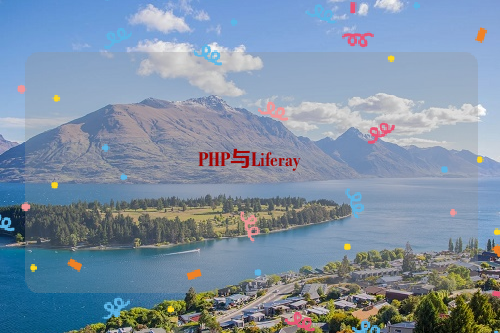Title: PHP and Liferay Integration
With the rapid development of the internet, the development and deployment of enterprise-level applications have become an important field. In this field, PHP, Java, and C++ are three very popular programming languages that each have unique advantages and can meet different types of project requirements. This article will explore how to combine PHP, Java, and C++ to create a powerful enterprise-level application, such as Liferay.

Let's take a look at the basic characteristics of these three programming languages:
1. PHP: PHP is an open-source server-side scripting language mainly used for web development. It is concise, easy to understand, and has a relatively gentle learning curve, making it suitable for quickly building web applications. PHP supports multiple databases, such as MySQL and PostgreSQL, and can easily interact with databases. PHP also has good security features and cross-platform capabilities.
2. Java: Java is an object-oriented programming language with features such as cross-platform, high security, and strong scalability. Java has extensive use in enterprise-level application development, especially in large systems and distributed systems. Java supports multiple databases, such as Oracle and MySQL, and can easily interact with databases. Java also has good performance and stability.
3. C++: C++ is a general-purpose programming language with high performance and strong low-level operations capabilities. C++ has wide applications in game development, operating systems, embedded systems, etc. C++ can conveniently call various library functions to achieve complex functionality and has good cross-platform capabilities.
So, how can we combine PHP, Java, and C++ to create a powerful enterprise-level application like Liferay? Here we will take Liferay as an example for illustration.
Liferay is an open-source enterprise portal framework primarily used for building enterprise-level web applications. It is based on Java development and supports various technology stacks, such as PHP, JavaScript, CSS, etc. We can use PHP as the front-end technology stack of Liferay to quickly build web applications due to its concise and easy-to-understand nature. Liferay also provides rich Java APIs for convenient interaction with the back end. Meanwhile, C++ can be used to implement some high performance requirements such as real-time communication or data encryption.
We can follow these steps to integrate PHP, Java, and C++:
1. Use PHP as the front-end technology stack to build Liferay Web applications. In the front-end pages, we can use PHP to write dynamic content such as data display or form submission. We can also use PHP to interact with the back end to obtain data and update page content.
2. Utilize the Java APIs provided by Liferay to implement back-end functionality. In the back-end services, we can use Java to write business logic such as data processing or permission control. We can also leverage Java to implement integration with other systems such as database connections or message queues.
3. Apply C++ to performance-critical scenarios in Liferay. In Liferay, we can use C++ to implement specific features such as real-time communication or data encryption. By packaging these features into independent modules or plugins, we can provide users with a better experience.
By combining PHP, Java, and C++, we can create a powerful enterprise-level application like Liferay. This combination approach not only fully leverages the advantages of each programming language but also improves the project's scalability and maintainability.




还没有评论,来说两句吧...